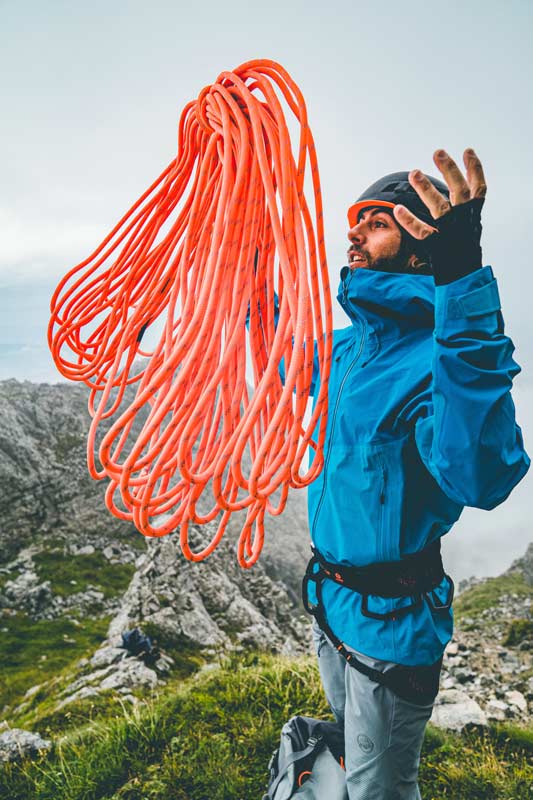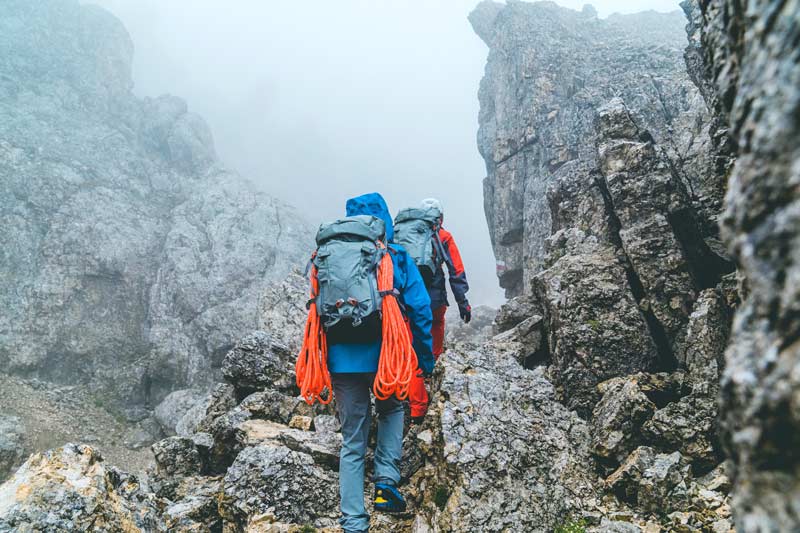Mammut launches the Close The Loop project in partnership with the climate protection organization Protect Our Winters (POW). Old, discarded climbing ropes are collected and recycled. Bring your rope to one of the partner halls or send it to Mammut free of charge. The collection campaign is currently limited to Switzerland.
A contribution in cooperation with Mammut Sports Group AG
The effects of climate change threaten the ecological balance of the Alps and thus the mountains we love. A state that moves not only outdoor enthusiasts but also companies to take action.
With the project, Mammut wants to recycle no longer used ropes and manufacture new products from the material.
The Swiss outdoor company Mammut is leading the way and is launching the “Close The Loop” project in partnership with the climate protection organization Protect Our Winters Switzerland (POW). We are looking for old, discarded ropes that can be made available for recycling.
Climate change threatens our passion
In Switzerland, the annual average temperature has risen by 19 degrees Celsius since the second half of the 1,8th century, twice as much as in the rest of the world. Nowhere else in Central Europe is climate change more drastic: Switzerland is experiencing serious changes in the water balance and landscape with the melting of the glacier and the decline in snow - and the conditions for mountain sports are deteriorating increasingly.

The focus is on the ropes
Mammut started out as a manufacturer of ropes in 1862 and ropes are still an important pillar of the company today. At the same time, rope manufacture has a major impact on the environment, as ropes are made from polyamide. Polyamide is an extremely versatile and durable product, but it is based on petroleum and thus significantly increases the CO2 emissions of rope production. Mammut wants to take responsibility, especially because of its own roots, and has set itself the goal of being climate-neutral as a company by 2050.
With the pilot project “Close The Loop”, Mammut is taking a further step in this direction and making a contribution to more sustainable mountain sports.
The raw material can be given a second life by recycling the ropes.
In the best case scenario, it may even be possible to manufacture a mountain sports product from the recycled material. The main motivation of the project is to transfer ropes from a linear product life cycle to a circular one - because the circular economy for the sustainable use of natural resources is becoming increasingly important.

From waste to a new product
"Close The Loop" is a pilot project run by the climate protection organization Protect Our Winters Switzerland (POW) is supported. With the project, Mammut would like to gain more knowledge about how raw materials can be used longer and more than once in order to reduce the footprint of mountain sports - even if the exact reuse of the recycled material is still unclear.
In a first step, the used ropes are collected and recycled. In this process, Mammut works together with an external company that processes the ropes in several process stages in order to be able to create a new product from them. In addition to the ropes it collects, Mammut also recycles waste and cuttings from its own rope production.
Become part of the loop - bring your rope back or send it to Mammut for free
Mammut depends on our old ropes for the success of the project. Used ropes of all brands are collected. You can drop off your rope directly in one of the following climbing halls or in a Mammut store. If you are unable to hand over your rope in person, you can send it to Mammut by post free of charge. You will receive the return label here.
You can bring your old rope past in these Swiss climbing halls
- Handy climbing hall in Uster - www.griffig.com
- The climbing hall St. Gallen AG - www.diekletterhalle.ch
- Power reactor AG Lenzburg - www.kraft Reaktor.ch
- Vertic Hall Saxon - www.vertic-halle.ch
- Climbing center Ap 'n Daun Chur - www.kletterzentrumchur.ch
- Mammut Store Lucerne - www.mammoth.com
- Mammut Outlet Landquart - www.mammoth.com
- C + Urban Climbing Neuchâtel - www.cplus-climbing.ch
You may also be interested in
+ + +
Credits: Image and text Mammut Sports Group, (1) Climate warming study(2) Study conditions for mountain sports

